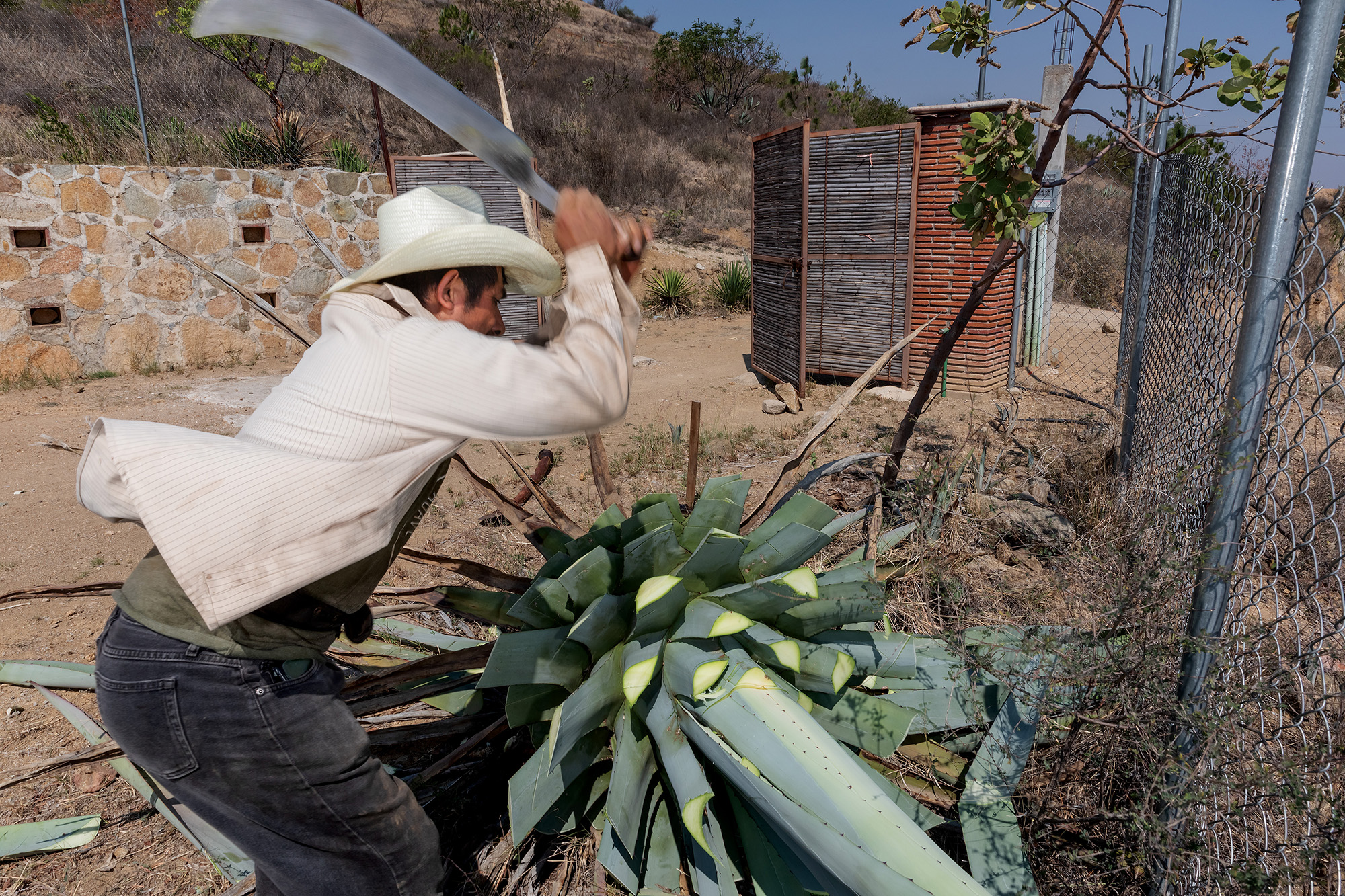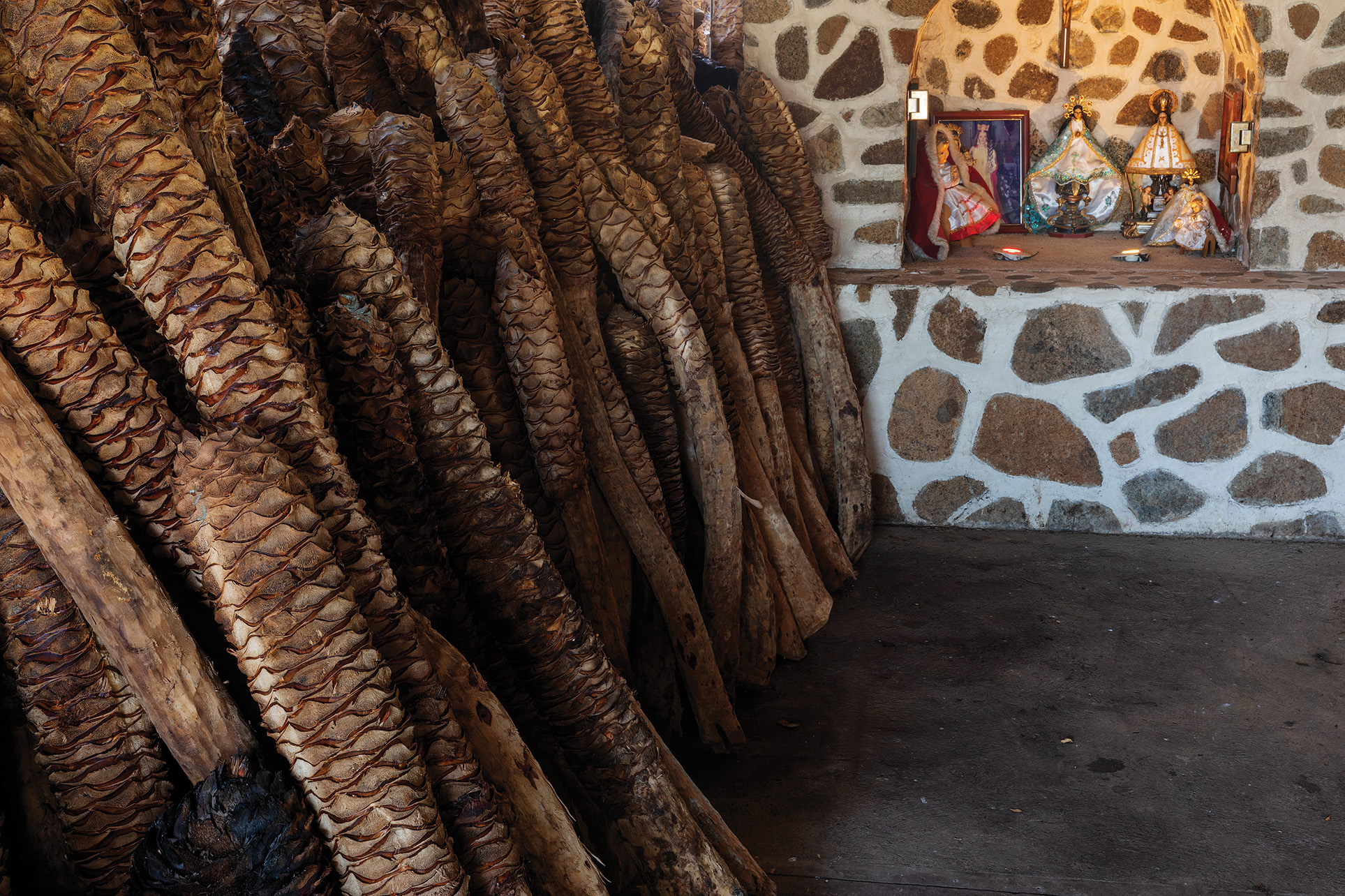Latin America
Related: About this forumThe Race to Save Mezcal From the World
September/October 2024
Climate change, corporate money, soaring demand—can Mexico’s local agave growers find a viable path for a beloved beverage?
The village of Santa Catarina Minas, a 25-mile drive south from the city of Oaxaca, in southern Mexico, doesn’t look like much. There is among its dusty streets a small church, a snack bar, a convenience store and, to the casual traveler, apparently little else. But this former center of gold and silver mining has become a pilgrimage site for spirit fanatics, sometimes called the “cradle of mezcal,” known for producing some of the most celebrated agave distillates in Mexico.
At Real Minero, among its most famous palenques, as Oaxaca’s small mezcal distilleries are known, a bountiful garden showcases the rich diversity of agave plants from which mezcal can be made, each variety imparting to the final spirit a distinctive vegetal profile. Upright cuishe as narrow as fence posts; broad-bellied tobalá; blue-green tepeztate with wide, spiky leaves, all surrounded by cacti and other plants indigenous to this dry mountain region. “We brought the mountain here, to recreate the environment where these agaves grow in the wild,” says Matías Domínguez Laso, Real Minero’s wiry consulting biologist, who tends the garden.

A worker at Real Minero harvests agave, known for their long lives. Claudio Contreras Koob

Roasted karwinskii agave, a species distinguished by long, narrow piñas, at Lalocura.
Real Minero and Lalocura are run by several Ángeles siblings, part of a multigenerational mezcal-making family described by one scholar as “aristocracy.” Claudio Contreras Koob
We’re touring the property in late spring. Domínguez Laso, protected from the sun in khaki field gear and a floppy hat, points out among rows of maturing agave plants a few towering quiotes. These reproductive stalks, jutting as high as 30 feet in the air, shoot up from agave plants at the end of their life cycle after 10 or 15 or 20-plus years—a last gasp at immortality. Soon the quiotes will bloom with tiny flowers, and then the lesser long-nosed bats will arrive. Come nightfall in spring and summer these migratory bats, primary pollinators for many agave species, throng flowering quiotes across Mexico, dipping in their pointy snouts and elongated tongues to lap up nectar and spreading genetic material as they move from one plant to the next.
For millennia these bats have played a key role in propagating Mexico’s wide range of agaves, hardy succulents able to survive in desert conditions on minimal water. “Without bats, there would be no agave,” Rodrigo Medellín, Mexico’s foremost bat biologist, explained later. “This is a 10- to 12-million-year-old story—it’s a love story. As agave started developing, evolutionarily, the plants would get more and more sugar in the core, and then at the end of their life they invest every ounce of that sugar into one single sexual reproductive event. And then they grow the flowering stalk, they open their arms like that, inviting the pollinators, feeding them crazily—and then they die.”
But the flowers are late this year, and so are the bats. “Because of global warming, agave behaviors are changing, quiotes are growing earlier than usual or later than usual,” says Graciela Ángeles Carreño, a fourth-generation mezcalera who took over operations of Real Minero after her father, Lorenzo Ángeles Mendoza, died in 2016. The bats, once listed as endangered in the United States and threatened in Mexico, have come back from the brink after years of conservation efforts. But a breakdown in the historic relationship between agave plants and this primary pollinator is just one of many factors threatening the long-term ecological health of Mexico’s mezcal-making regions.
More:
https://www.smithsonianmag.com/arts-culture/race-save-mezcal-from-world-oaxaca-180984899/
samnsara
(18,081 posts)...but I never drank (nor will I ever) the worm
Silent Type
(5,504 posts)little tag with a photo of the weather-worn farmer, his donkey for grinding the Agave at a stone wheel, etc.
Hope they are successful in protecting the plant.